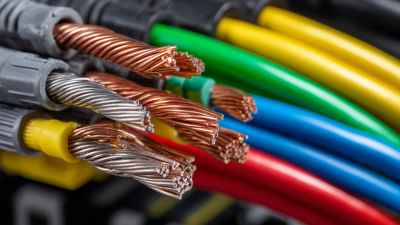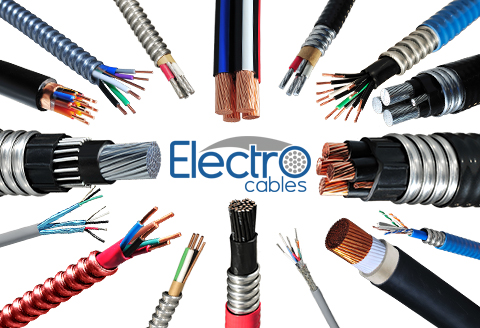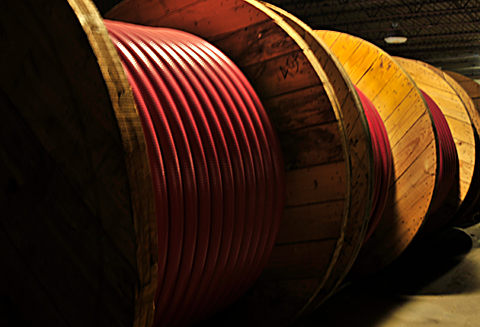A partner you can trust
How to Effectively Utilize Shore Power Cables for Sustainable Energy Solutions
In the pursuit of sustainable energy solutions, the effective utilization of shore power cables plays a crucial role in reducing emissions and promoting eco-friendly practices in maritime operations. Shore power cables enable vessels to connect to the electrical grid while docked, allowing them to shut down their auxiliary engines and minimize reliance on conventional fuels. This shift not only lowers the carbon footprint of ships but also improves air quality in port communities.

As shipping industries face increasing pressure to adopt greener technologies, understanding the intricacies of shore power cable deployment becomes essential. This guide will explore best practices in leveraging shore power cables to enhance energy efficiency and sustainability, ensuring that marine operators can adopt these innovative solutions to meet regulatory demands and contribute to global environmental goals.
Understanding Shore Power: Definition and Purpose
Shore power refers to the electricity supplied to a vessel while it is docked, allowing it to power onboard systems without relying on fuel-based generators. This practice significantly reduces emissions and noise pollution in port areas, providing a cleaner and more sustainable energy alternative. By connecting to shore power, ships can use the electrical grid of the port, which is increasingly sourced from renewable energy like wind, solar, and hydropower. This connection not only lowers operational costs for shipping companies but also contributes to the broader goal of reducing the marine industry's carbon footprint.
The purpose of shore power is multifaceted. First and foremost, it enhances environmental sustainability by curbing greenhouse gas emissions, which are particularly high when ships operate their diesel generators while docked. Additionally, shore power facilitates compliance with emissions regulations in many ports, which are becoming increasingly stringent. By utilizing shore power, vessels can maintain their systems, such as lighting, heating, and air conditioning, without the environmental impact associated with traditional fuel sources, ultimately promoting a greener and cleaner maritime industry.

Key Benefits of Using Shore Power Cables for Sustainability
Shore power cables present a significant opportunity for enhancing sustainability in the maritime industry. By allowing vessels to connect to shoreside electricity while docked, ships can reduce their reliance on onboard generators, leading to lower emissions and decreased noise pollution. The use of shore power not only facilitates cleaner energy transitions but also aligns with global efforts to minimize the environmental impact of shipping activities. Ports equipped with shore power systems can effectively support a variety of vessels, including passenger and merchant ships, enhancing their operational efficiency and sustainability.
The benefits of utilizing shore power cables extend beyond immediate environmental gains; they also foster cooperative optimization between energy allocation and berth management. This balance can reduce overall costs for shipowners and port operators. As the marine industry moves toward electrification, integrating innovative shore power solutions becomes crucial, paving the way for a more eco-friendly maritime environment. Furthermore, cities like Amsterdam demonstrate the feasibility and effectiveness of such initiatives, ensuring that both the local community and the broader ecosystem can thrive.
Best Practices for Implementing Shore Power Solutions
Utilizing shore power effectively is crucial for promoting sustainable energy solutions in the maritime industry. Best practices for implementing shore power solutions include establishing robust infrastructure that supports both shoreside and shipside connections. This involves not only upgrading port facilities to accommodate electric charging stations but also ensuring that vessels are equipped with compatible systems. As various types of vessels—ranging from passenger ships to offshore support vessels—transition to electric propulsion, ports need to adapt their operations accordingly. Collaboration among stakeholders can enhance the efficiency of these systems and promote wider adoption.
In addition to infrastructure improvements, ongoing training and education for port operators and shipping companies are essential. Sharing successful case studies, as seen in recent trials and symposiums, helps identify innovative approaches to shore power utilization. These efforts can facilitate the reduction of emissions and support the transition to low-carbon shipping practices. Moreover, by engaging in knowledge-sharing platforms, stakeholders can address challenges collectively, leading to opportunities for further advancements in sustainable maritime solutions.
Technological Innovations in Shore Power Systems
Shore power systems have seen significant technological innovations that enhance their efficiency and sustainability. One of the most notable advancements is the development of high-voltage shore power connections, which allow vessels to plug into the local grid and reduce their reliance on fossil fuels while docked. These systems not only minimize emissions but can also offer cost savings through the use of locally sourced renewable energy. As more ports invest in these capabilities, they're paving the way for a cleaner maritime industry.

Tips for effective utilization of shore power cables include ensuring proper maintenance and regular inspections to avoid connectivity issues. Especially in busy ports, scheduling connection times strategically can improve energy management and reduce peak demand stress on the grid. Furthermore, adopting smart grid technologies can facilitate better integration of renewable sources, making the transition smoother for both port facilities and visiting vessels. Streamlining these processes ultimately makes shore power an attractive option for sustainable energy solutions in the maritime sector.
Challenges and Solutions in Shore Power Cable Utilization
The utilization of shore power cables presents several challenges that must be addressed for effective implementation. One major challenge is the infrastructure required to support shore power systems. Many ports lack the necessary electrical connections and equipment, which can hinder ships from plugging in while docked. Additionally, there can be significant costs associated with retrofitting existing facilities or creating new ones.
Another challenge involves the compatibility of various vessels with shore power systems. Different ships may require different voltage and frequency levels, making standardization difficult. This lack of uniformity can lead to inefficiencies and potential operational disruptions.
**Tips:** To overcome these challenges, ports can collaborate with shipping companies to assess specific power needs and work jointly towards achieving compatibility. Additionally, investing in modular electrical designs can facilitate upgrades and scalability. Finally, educating staff about the benefits of shore power can foster a cooperative environment, encouraging usage and optimizing sustainability efforts.
How to Effectively Utilize Shore Power Cables for Sustainable Energy Solutions - Challenges and Solutions in Shore Power Cable Utilization
| Dimension | Description | Challenges | Solutions |
|---|---|---|---|
| Environmental Impact | Reduction of emissions from vessels in port | High upfront infrastructure costs | Government subsidies and incentives |
| Operational Efficiency | Increased use of alternative power sources | Compatibility issues with existing systems | Standardization of shore power connections |
| Technical Feasibility | Easier access to clean energy | Limited port infrastructure | Investment in port upgrades |
| Regulatory Aspects | Compliance with environmental standards | Varied regulations across regions | Harmonization of regulations |
| User Adoption | Increased acceptance of shore power | Lack of awareness among ship operators | Education and training programs |
Related Posts
-

Ultimate Guide to Choosing the Right Shore Power Cable for Your Business Needs
-

Exploring Innovative Power Extension Cable Options for Every Need
-

The Ultimate Guide to Choosing the Right Electric Cable for Your Projects
-

How to Choose the Best Flat Power Cable for Your Needs
-

What is the Importance of Wire Cable in Modern Electrical Systems
-

Top Strategies for Sourcing Shielded Power Cable in Global Markets

Products
Products
LEARN MORE
Current Inventory
Current Inventory
LEARN MORE
Custom Solutions
Custom Solutions
WE CAN HELPLighting Power & Control-Signal Cable
This content is restricted to site members. If you are an existing user, please log in. New users may register … LEARN MORE “Lighting Power & Control-Signal Cable”
LOOKING
FOR HELP?
We are here to help. You can contact us or create an account online to have access to special products, technical specifications and our new online quote tool.
ELECTRO CABLES
9 Riverside Drive
P.O. Box 276
Trenton, Ontario
CANADA K8V 5R5
N.A. Toll Free: 888-ELECTRO
(1-888-353-2876)
World: 613-394-4896
Fax: 613-394-4101
Email: sale@machinecables.com
We manufacture cables that are certified by the Canadian Standards Association (CSA), listed by Underwriters Laboratories and/or listed by Intertek (ETL).
Our quality management system is registered to ISO 9001: 2015. Our team is dedicated to consistently providing quality service and products to our customers.

© 2025 ELECTRO CABLES • SITE BY SNAP 360•
